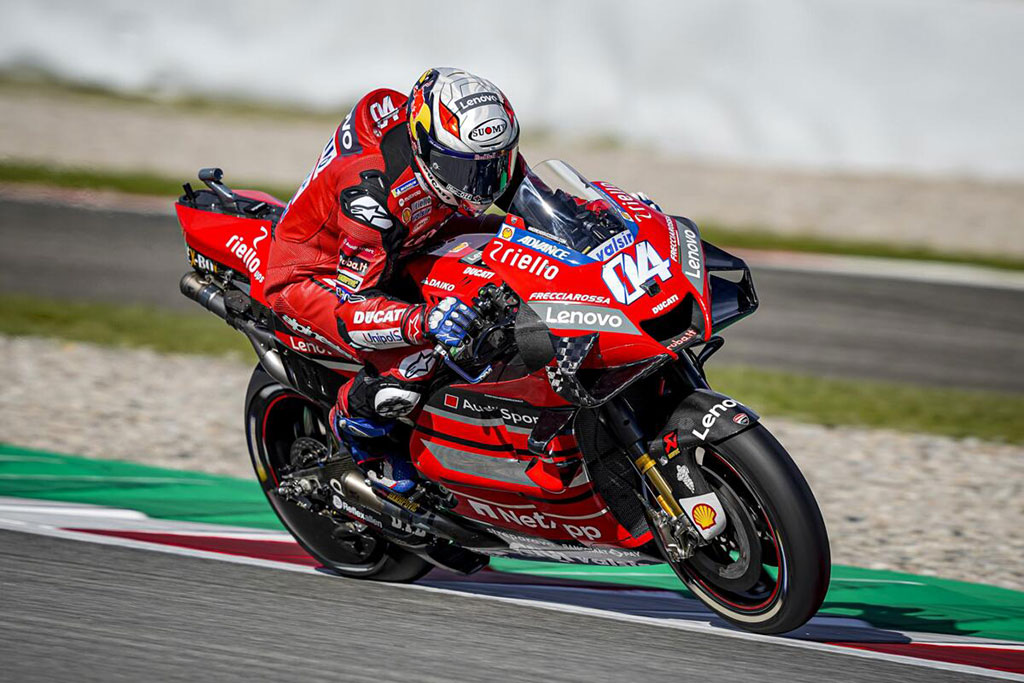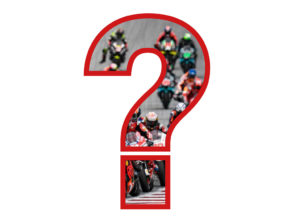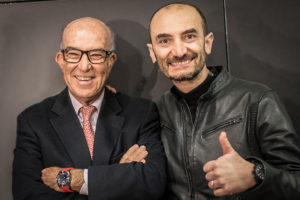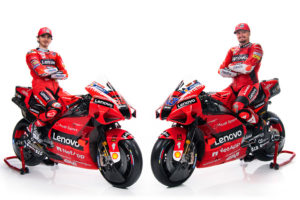Not many are satisfied with the continuous penalties imposed on riders who sometimes, in the heat of the competition, put the wheels off the track’s bounding line even if only a few centimeters.
In this regard Eddie Lawson, 4 times World Champion class 500 in the 80s, during an interview said: “I always look at MotoGP, it is a good show, although sometimes there are too many investigations, track limits; we had none of this, sometimes we touched each other but it was ‘racing’. We competed. That’s what racing is all about. Sometimes you get long, touch yourself. I don’t think it’s fair to follow Formula 1. I’m a Fan of Formula 1 but not of these things.” And if Lawson says so famous for his calmness and driving cleanliness…”
But, before criticising these rules, and why they were introduced, we need to make some considerations about safety in racing.
The safety of racing circuits
In fact, we could say that the limits have always existed, not imposed but naturally, when it was walls, sidewalks, trees or light poles that delimited the space within which to put the wheels.
And investigations and subsequent penalties were not necessary because the punishment came from those same obstacles and often went far beyond the penalty of a few tenths or some position. The riders who attend the road races, Tourist Trophy on all of them, still know something about it today.
And then the Federation, in agreement with the organizers and owners of the circuits, also driven by the pressure of the riders (remember that Giacomo Agostini was one of the first to boycott the TT) began progressively to eliminate from the world tour the circuits too dangerous, to create escape routes where possible and to build new circuits applying safety criteria.
The first “safe” runways were, mainly in England, taken from the old disused airports of World War II.
At this point the tracks of the tracks no longer had “natural” boundaries and the riders as they dared more and more incentivized also by the fact that, in the absence of visual obstacles, the riders could arrive with their eyes over the curve thus having under visual control everything that happened in front of them. Paradoxically, the danger came precisely from the greater sense of safety that the pilots perceived.
Initially circuits built with a careful look at the safety of the drivers saved the lives of many of them but then, in the late 1960s, Formula 1 drivers asked to install the Armco barriers, the infamous guard rails, to “brake” their single-seater in case of exit of the track; those barriers did indeed bring an important improvements to the safety of protected Formula 1 drivers in cockpits where they were held well with seatbelts but for motorcyclists they were obstacles as hard as a wall so much so that in the MotoGP paddock they were mentioned as “the tracks of death”.
It was therefore planned to remove the barriers and replace them with metal mesh fences which were supported by wooden poles; they were fine if the driver during the fall impacted against the nets but if unfortunately it impacted against one of the support poles the consequences could be dramatic if not quite fatal as in the case of Gilles Villeneuve, Otello Buscherini and Paolo Tordi.
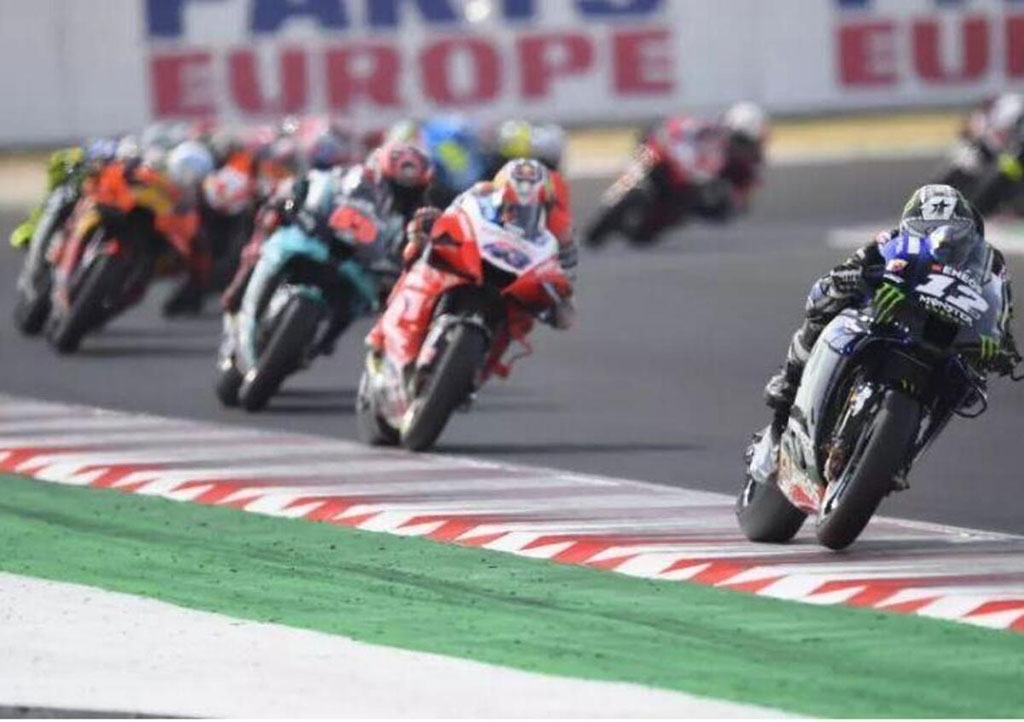
It then seemed a better idea to create wide escape routes, bordered by a strip of grass and then filled with gravel or sand with the function of slowing down the rush of men and means; but even this solution had its negative implications because the riders (and the bikes) instead of slipping rolled so violently that they suffered even very serious injuries and on top of a wet track the grass became excessively slippery. Later, astroturf (artificial grass) arrived to replace the natural grass at the edge of the track but in practice it did not prove to be a solution.
Finally, instead of gravel came the asphalt which seemed to be a solution, if not definitive, certainly better than all the previous ones.
The asphalt comes when the automotive Formula 1 senses that the best solution for driver safety is to put them in a position to use the brakes to reduce the speed of the single-seater before a possible impact, or precisely to avoid impact, after a track exit.
Initially, when the escape routes were introduced on asphalt, as part of the two wheels it was thought of lethal consequences for the driver in case of a fall but then, reflecting on the dynamics of the falls, it was observed that in general the first impact occurs on the asphalt of the track (and the consequences can be particularly serious in case of high side) after which begins the slide towards the escape route with less probability of rolling.
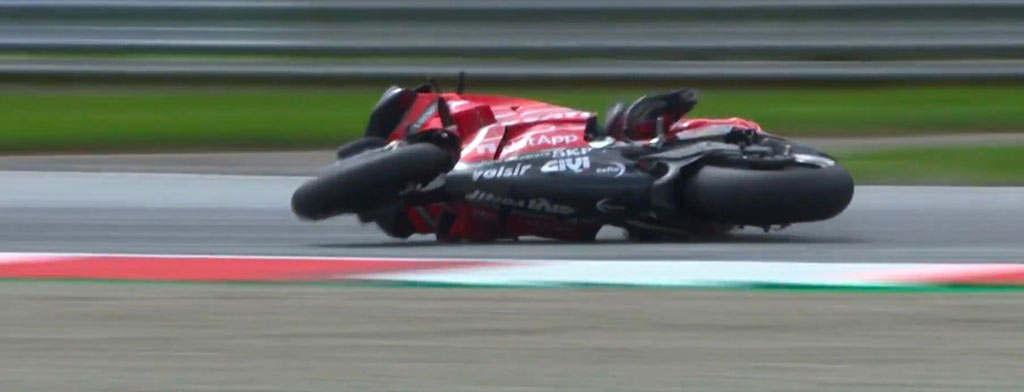
Unfortunately, this greater sense of safety has led the riders to face the curves in an increasingly difficult way with the consequence of expanding more and more outbound even beyond the curbs, sometimes drawing obvious advantages of time or facilitation in the overtaking phase or even in case of error.
The introduction of green zones
Hence the introduction of regulations on track limits and green zones to try to prevent riders from more or less deliberately using escape routes as well, taking advantage of them.
But these rules do not seem to be appreciated by some insiders, including pilots, and a wide range of enthusiasts, mainly because the application of penalties often seems incomprehensible or even unfair.
Some of those opposed to the green zone rules have come to the view that we should return to gravel, but we disagree that this solution would run counter to current safety trends. Just think that in the 1990s alone four World Champions – Wayne Rainey, Kevin Schwantz, Mick Doohan and Alex Crivillé – were forced to withdraw from competition due to the consequences of a fall.
And therefore, asserted that the solution of the escape routes on asphalt is the best known, it is appropriate to ask why the concern arises to penalise a driver who “steals” just a few millimeters of track.
The answer in part is that today in all three classes of the Grand Prix the differences in lap times between the top 10/15 riders are extremely small, so every penny of a second counts and it therefore makes sense that the rider who illegally earns a few hundredths of a second is punished.
The guiding principle of the rules is very clear: if you put your wheels on the green test area you are zeroed the lap time while in the race you will have a penalty in seconds or you will be forced to a Long Lap Penalty or give up a position.
Some riders claim that on many occasions they would not have gained any real advantage (for example if the driver is leading the race in the last laps with an appreciable advantage) but it cannot be denied that in reality they would have been favored for avoiding a disadvantage if in the escape route instead of the asphalt they had found grass, gravel or sand that would surely have slowed the momentum of the race forcing him at least to peel the accelerator.
However, while accepting these rules, penalties are often contested as unfair by both riders and passionate TV viewers. Unfortunately, no one seems to realize that stewards coordinated by former World Champion Freddie Spencer have numerous cameras available that allow observation from different points of view, including high-definition image recognition cameras that automatically identify and record every single violation, so measures are not taken based on the only TV footage we see.
Track limits and green areas: the regulation
These are the highlights of the rules:
- Exceeding the track limits means that a driver has put both tires on the green and neither tyre touches at least part of the white line that borders the track edge. Stewards only penalise a driver when they have a clear TV image of the offence. Otherwise, the pilot will benefit from the doubt.
- When a driver uses the green in training or qualification, the lap is cancelled.
- Infractions during races are more complex. If a pilot clearly wastes time running on the green, no action is taken. If a pilot passes on the green to avoid another driver, no action is taken.
- The driver who exceeds the limits of the track three times is sent a warning (warning) after which, at the next infringement, he will be penalized with a long lap. But if the driver gets a real advantage in a single infringement he can be punished with a long lap or time or position penalty.
- The last lap is subject to a different, stricter regulation, because in theory a pilot who has not received any warning could use the green space with impunity. Therefore, any driver who uses the green to gain an advantage on the last lap will be subject to a time or position penalty.
According to track design experts, the problem of track limits emerges significantly in many modern circuits where narrow curves of about 90° prevail, on the contrary it does not occur significantly in “natural” circuits such as Phillip Island, Mugello, Assen, Silverstone or in the Termas de Rio Hondo circuit designed by Jarno Zaffelli with criteria different from those designed by the German Hermann Tilke.
Conclusions
Wanting to avoid the rules on the green – which, however punctual and precise, are still subject to an arbitration assessment – a solution could be found in the adoption of low friction coefficient paints that would in fact constitute a penalty in case of exit from the limits of the track forcing the pilot to “peel” the accelerator or automatically let the antispin come into operation.
I do not think it is technically impossible but, once we have established the safe level of a low coefficient of friction, there would probably be difficulty in obtaining that same level of grip on all tracks and in all conditions.
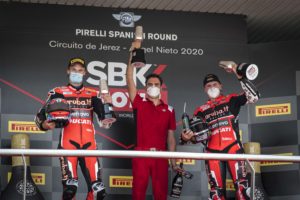
SBK a Jerez: avanti tutta!
A Jerez de la Frontera, seconda tappa del campionato SBK, si ri-accende lo spettacolo con Ducati protagonista. Doppietta di Redding e secondo posto in gara 2 per Davies.
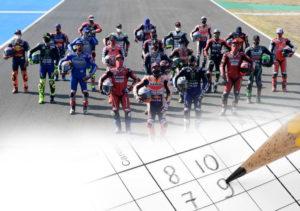
Le pagelle del mondiale MotoGp 2020
Le pagelle del campionato MotoGp 2020, i voti ai piloti che hanno partecipato a questo pazzo, pazzo mondiale.

